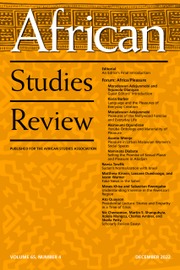Saidat Ilo’s Governance and Economic Growth in Nigeria: The Role of China and the U.S. Between 2001–2011 is a well-researched work relevant to academics and those interested in Nigeria’s economic history, foreign policy, and international relations. Examining Nigeria’s GDP growth during this period, Ilo highlights the roles of the United States and China, offering insights into the country’s economic trajectory. The book evokes nostalgia and urgency, prompting reflection on Nigeria’s current economic struggles, which contrast with the progress documented here. While GDP growth was significant, it did not translate into poverty reduction, though it remained a key indicator of Nigeria’s economic advancements, shaped by internal governance and foreign partnerships. Ilo begins with a 2000 Economist article that described Africa as a “hopeless, impoverished continent,” contrasting it with a 2011 portrayal of Africa as a “hopeful continent.” This shift underscores the need to examine Nigeria’s role in this transformation. Despite conflicts and economic downturns in some African nations, Ilo argues that Nigeria emerged as a key player attracting investments from both China and the United States, reinforcing its strategic importance in the global economy.
Before analyzing the profiles of Nigeria, China, and the United States, the author explores key theories that underpin the study, including realism, liberalism, Marxism, dependency theory, modernization, globalization, and power transition theory. Drawing from scholars like Niccolò Machiavelli and Hans Morgenthau, she highlights realism’s focus on power struggles in an anarchic system. In contrast, liberalism emphasizes that shared interests can foster peace and survival, extending to international relations. Transitioning to Marxism and dependency theory, the author argues that economic interests shape relationships, with developed nations exploiting the poor, thus perpetuating dependence. This is framed within power transition theory, which examines the shift from one hegemon to another, particularly China and the United States in Africa. The second chapter shifts to governance, defined as the government’s ability to allocate resources effectively for economic and social welfare. Drawing on scholars like Jean-Jacques Dethier and Francis Fukuyama, Ilo underscores governance’s critical role in a nation’s prosperity and stability, noting that GDP growth does not always equate to poverty reduction.
Ilo further examines Nigeria’s demographic, economic, and political landscape to highlight its significance to both the United States and China. She begins by contextualizing Africa’s history—tracing its precolonial prosperity, as exemplified by civilizations such as Egypt and Timbuktu, and the subsequent disruptions caused by the trans-Atlantic slave trade and colonialism. This broader historical lens provides a foundation for understanding Nigeria’s early encounters with Europe. Building on this context, she transitions smoothly into Nigeria’s profile, emphasizing its diverse population, economic growth, and regional importance, including its designation as one of Goldman Sachs’s “Next Eleven” economies. Using the concept of governance, the author assesses Nigeria’s economic progress from 1999 to 2011, particularly under President Obasanjo’s 2004 rebranding and economic reforms. She argues that governance, aimed at mobilizing and deploying resources for the public good, was responsible for both the gains and losses during this period. The gains include reforms revitalizing sectors such as agriculture, power, and telecommunications, with policies like the National Economic Empowerment Development Strategy (NEEDS) promoting macroeconomic stability and development. However, these efforts were undermined by government corruption.
After analyzing Nigeria’s socioeconomic and political history, she transitions to China’s development, tracing its shift from the Qing Dynasty to the Republic of China and the market reforms under Mao Zedong and Deng Xiaoping that fueled industrialization and private enterprise growth. She then examines China-Africa relations, which began in 1949, emphasizing principles of equality, mutual benefit, and non-interference that shaped China’s formal ties with Nigeria from 1960. A quantitative analysis of trade imbalances between China and Nigeria shows that while China benefits, the disparities are not statistically significant. Using literature, expert interviews, and SPSS analysis, she finds Nigeria’s GDP averaged $139.6 billion from 2001 to 2011, with trade between the nations averaging $4.44 billion, suggesting a positive impact of China-Nigeria relations on Nigeria’s GDP (pp. 108–109). In the same vein, she profiles the United States, emphasizing its economic power, technological influence, and historical engagement with Africa. While US foreign policy has traditionally overlooked Africa, the Bill Clinton administration’s African Growth and Opportunity Act (AGOA) in 2000 marked a shift toward trade and investment in Africa, of which towards the continent, of which Nigeria was a beneficiary. The author highlights efforts such as the establishment of the US–Nigeria Binational Commission in 2006 and the revitalization of USAID in 2010, emphasizing their roles in promoting educational support and conflict resolution. A statistical review of US–Nigeria trade relations indicates that strong governance and collaborative bilateral ties contributed positively to Nigeria’s GDP, which reached $139.6 billion, alongside U.S. assistance totaling $218.6 million during the period examined.
The author concludes by summarizing the chapters and recommending measures such as reducing corruption, revising bilateral agreements with China, and conducting a SWOT analysis of Nigeria’s ties with China and the United States. The book’s strength lies in its qualitative and quantitative approach, drawing from diverse sources, including databases from China and the United States, which provide valuable trade investment data. Its chronological and thematic organization enhances readability. However, some shortcomings exist. The introduction lacks clear examples and definitions, particularly regarding South-South Cooperation, and the absence of in-text citations in early sections limits further exploration. Additionally, the choice of the Mo Ibrahim Index of African Governance over other indices, which could have provided a clearer understanding of Nigeria’s economic progress, is not justified. Despite these issues, the book remains a valuable resource for students in political science, history, international relations, and economics, as well as for African policymakers, government officials, and those interested in Africa’s economic development.


